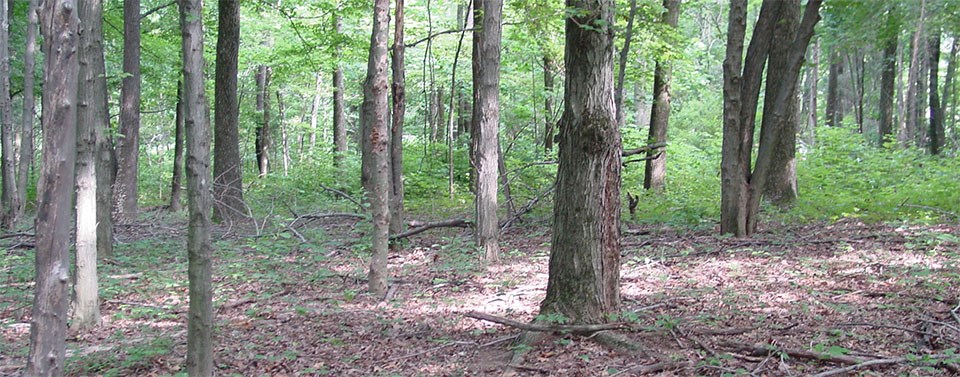Last updated: April 9, 2019
Article
Vegetation Community Monitoring at Lincoln Boyhood National Memorial

NPS-Photo

Diameter at breast height (cm) size class ranges for overstory trees.
Class 1 = 5-15 cm, 2 = 15-25 cm, 3 = 25-35 cm, 4 = 35-45cm, 5 = 45+cm
NPS

NPS
The forest at Lincoln Boyhood has some species representing the historic composition. But, white oak would have been more common and maples less common. These data are a valuable way for park managers to assess park goals and develop future action plans.
View the Full Report. (pdf)
Learn more about the Heartland Inventory & Monitoring Network.
Data in this report were collected and analyzed using methods based on established, peer-reviewed protocols and were analyzed and interpreted within the guidelines of the protocols.
Learn more about the Heartland Inventory & Monitoring Network.
Data in this report were collected and analyzed using methods based on established, peer-reviewed protocols and were analyzed and interpreted within the guidelines of the protocols.
